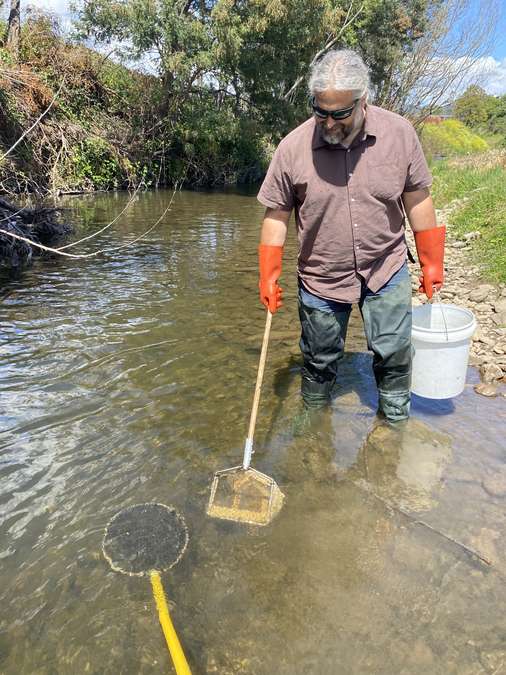Inland Fisheries Service collaborates with University of Kentucky lamprey scientist.

Dr. Jeramiah Smith, a professor from the University of Kentucky travelled to Tasmania in late October to collect samples from pouched lamprey (Geotria australis) that will be used to sequence the genome of this unique species. He also conducted field surveys in collaboration with Inland Fisheries Service officers, in search of lamprey nesting sites in Tasmania, which so far has never been documented.
Tasmania is home to two fascinating lamprey species, the pouched lamprey and the short-headed lamprey (Mordacia mordax). These two Southern species are distantly related to the lampreys Dr. Smith typically works with in the US and can be thought of as the marsupials and monotremes of the lamprey world. These lamprey species are secretive breeders (pouched lampreys build their nests under boulders), and embryos from lampreys that inhabit Tasmanian waters have only been observed a handful of times (outside of Tasmania) and have never been reported in Tasmania.
The Smith Lab studies lamprey genomes to better understand how vertebrate genomes change over time and how genes are regulated during development. One notable feature of the lamprey genome is that unlike many animals, lampreys re-engineer their genome during early development by removing specific chromosomes from their genome of most of their cells. Comparing the genomes and eventually the embryonic development in the Southern lampreys will improve our understanding of the evolution of lamprey and ancestral vertebrate genomes, as well as the cause and consequences of chromosome elimination.
In addition, our efforts to gain a better understanding of habitat use and nesting sites will help ensure the health of Tasmanian lamprey populations in the future.